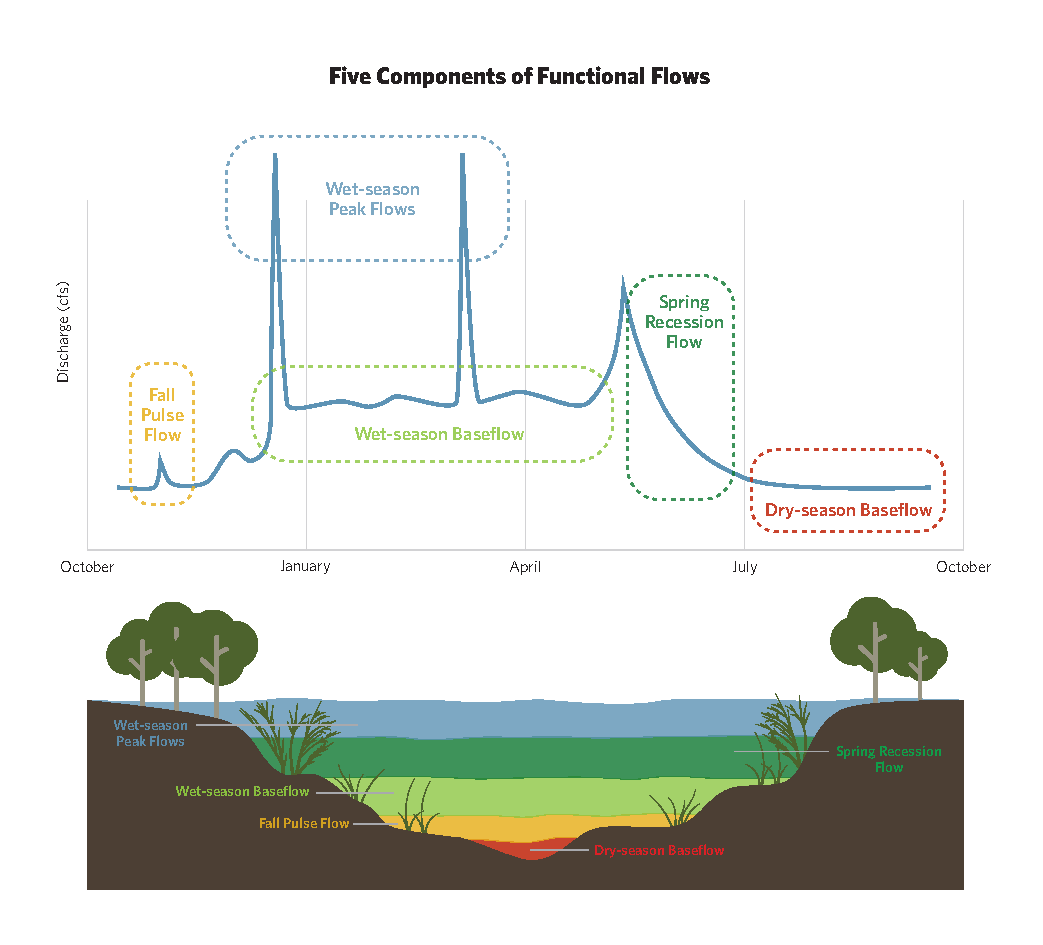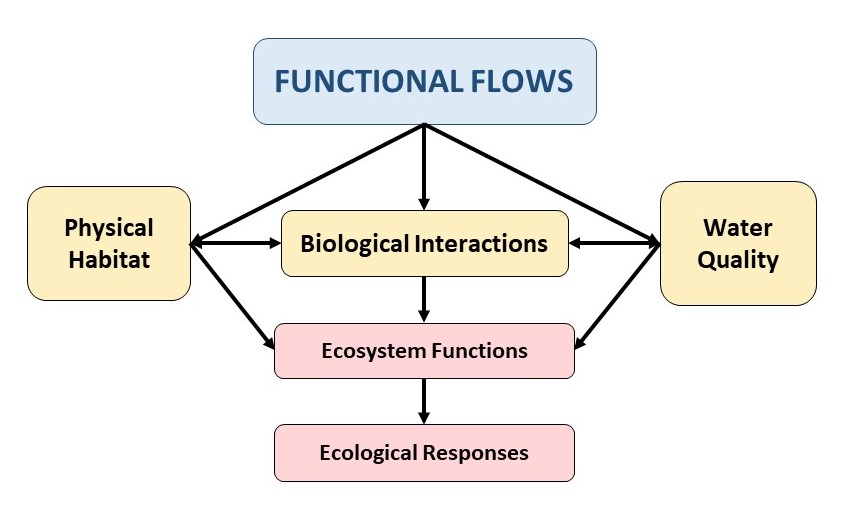Functional Flows Approach
The functional flows approach provides the basis for guidance provided in the Framework. Functional flows are distinct aspects of a natural flow regime that sustain ecological, geomorphic, or biogeochemical functions, and that support the specific life history and habitat needs of native aquatic species (Figure 1 below; Yarnell et al. 2015). Retaining key functional flow components in managed flow regimes is thus expected to support foundational physical and ecological processes that sustain biological communities (Grantham et al. 2020). The Framework focuses on five key functional flow components that have been identified by Yarnell et al. (2020) for California’s rivers and streams (Figure 1):
- Fall pulse flow, or the first major storm event following the dry season. These flows represent the transition from dry to wet season and serve important functions, such as moving nutrients downstream, improving stream flow water quality, and signaling species to migrate or spawn.
- Wet-season base flows, which support native species that migrate through and overwinter in streams.
- Peak magnitude flows, which transport a significant portion of sediment load, inundate floodplains, and maintain and restructure river corridors.
- Spring recession flows, which represent the transition from high to low flows, provide reproductive and migratory cues, and redistribute sediment.
- Dry-season base flows, which support native species during the dry-season period when water quality and quantity limit habitat suitability.

Figure 1. Functional flow components for California depicted on a representative hydrograph for a snowmelt-dominated system. The hydrograph on top shows how flows change throughout the year, highlighting the five functional flow components. The bottom panel shows how each of the flow components produces a different set of conditions in a river channel, changing the aquatic habitat available.
Although the five natural functional components of flows are the same for all of California’s rivers, their flow characteristics – magnitude, timing, frequency, duration, and rate of change – vary regionally. For example, the spring recession flow component will have a larger magnitude and longer duration for rivers in the Sierra Nevada than for rivers in the South Coast. Characteristics of the functional flow components also vary by water year type (dry, moderate, wet conditions). Thus, the functional flow components can be quantified by a suite of functional flow metrics – quantitative measures of the flow characteristics of each of five functional flow components – that reflect the natural diversity in flow characteristics throughout the state (Yarnell et al. 2020).
Collectively, functional flows interact with physical habitat, water quality, and biological processes to sustain the ecosystem functions that ultimately control the structure and health of ecological communities (Figure 2).

Figure 2. Conceptual basis of the functional flows approach. This approach relies on a priori hypotheses regarding the role of functional flow components and related functional flow metrics in supporting river-dependent species, communities and habitat maintenance processes.